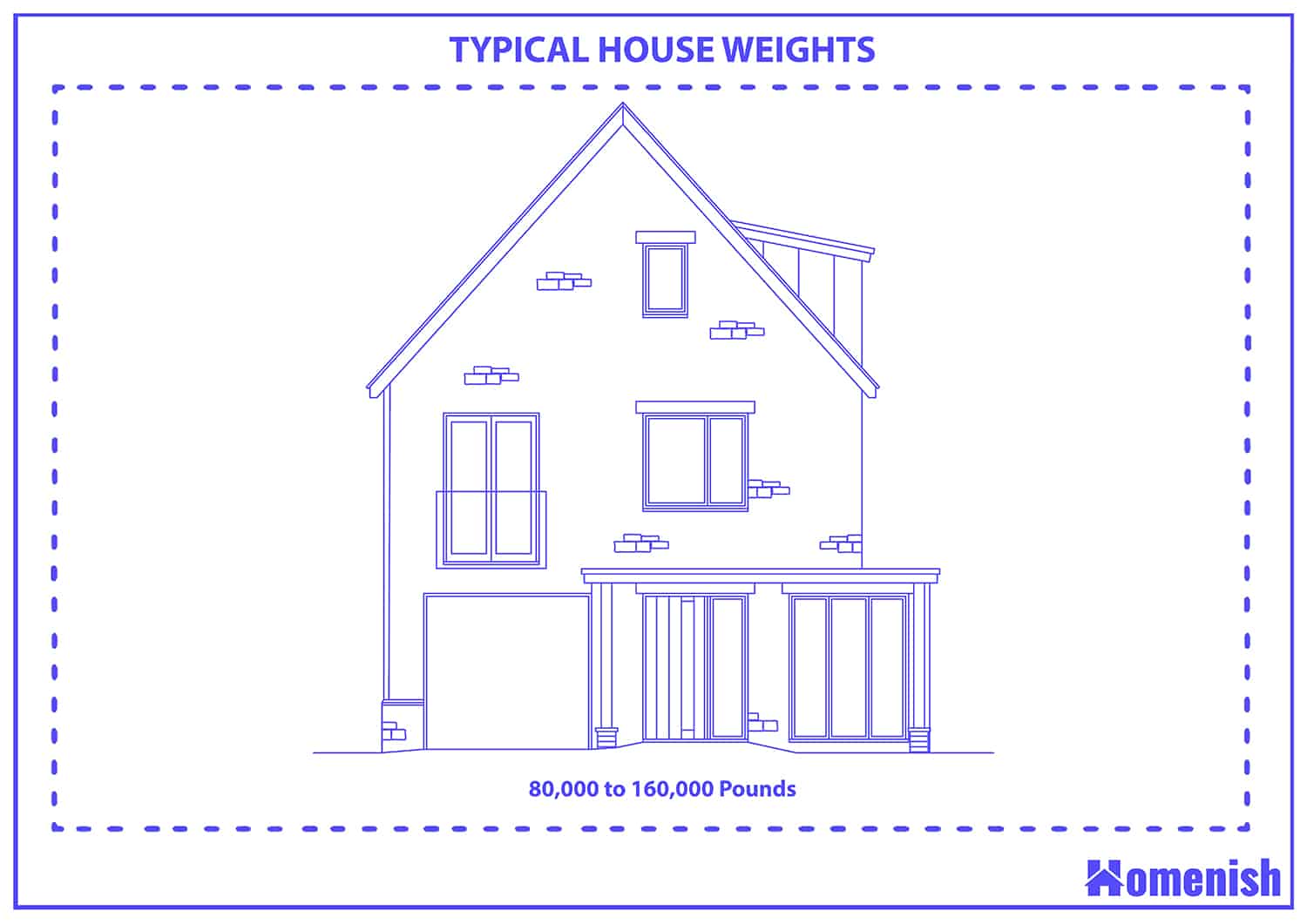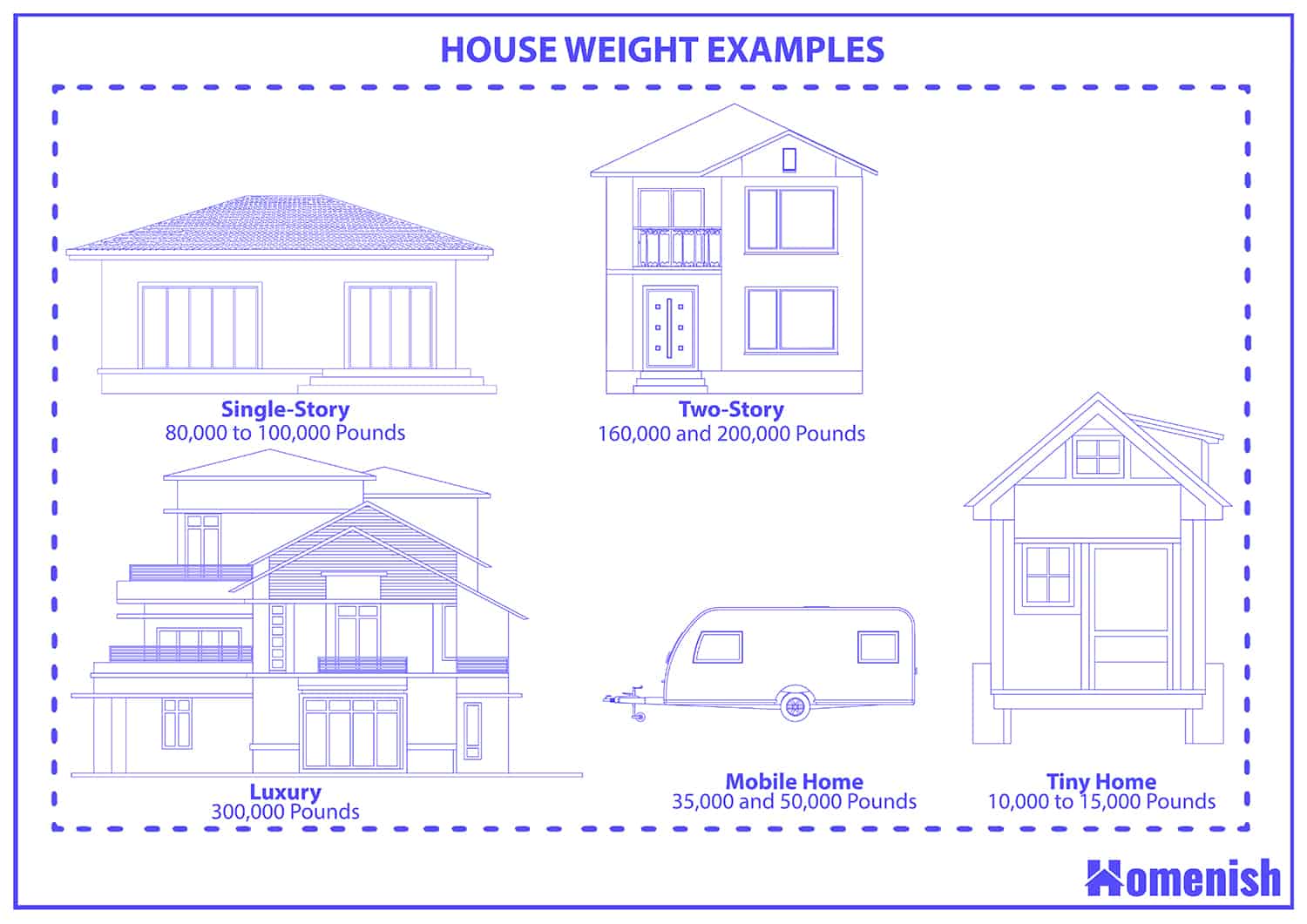Have you ever wondered about the weight of your home? While we encounter colossal objects daily, our homes are often taken for granted. Let’s dive into this intriguing subject.
A typical US house typically weighs between 80,000 and 160,000 pounds. This weight includes the foundation, the roof, and everything in between. The size and materials used to construct the house also play a significant role in determining its weight. Larger homes or those with heavier materials like brick or stone can weigh even more.
It’s interesting to note that every aspect of your home contributes to its overall weight. The materials used in the construction process add up from the foundation to the roof and everything in between. Even the smallest items, such as light fixtures, window blinds, and door knobs, can make a difference.
Understanding the Basics—What Contributes to a House’s Weight?
Let’s talk about the fundamental components that contribute to a house’s weight.
1. The Foundation
The foundation serves as the base and support for the entire house. Its weight varies based on its size and the materials used in its construction. For instance, a concrete foundation is heavier than that made of stone or wood.
The weight of the foundation impacts the load-bearing capacity of the soil and the structural integrity of the house. It will determine how well the house stands and supports its interior and exterior elements.
2. The Frame
The frame of a house acts as its skeletal structure, providing support for the walls, floors, and roof. Usually constructed from wood or steel, the frame’s weight significantly contributes to the overall weight of the house. The amount and size of the framing required for a house depend on its size and design. Larger homes with complex designs require more framing, resulting in a heavier structure.
The weight of the framing plays a crucial role in determining the foundation’s load-bearing capacity and the house’s stability. The frame must be constructed to withstand the weight of the walls, floors, roof, and all the contents of the house.
3. The Walls
The walls of a house are a significant factor in determining its overall weight. The weight of the walls depends on the materials used in their construction. For example, a brick or concrete wall is much heavier than a wall made of wood or drywall. The walls’ thickness and the house’s height also contribute to their weight.
The weight of the walls plays a critical role in determining the house’s structural integrity. The walls must be designed and constructed to withstand the weight of the floors and the roof.
4. The Roof
The weight of a roof is determined by various factors, including the materials used, the design, and the size. A flat roof is generally lighter than a pitched roof, while a metal roof is lighter than a tile or slate roof. The roof’s weight is particularly important in areas with heavy snow or rainfall as it must be constructed to withstand the additional weight.
The roof’s weight can affect the load-bearing capacity of the walls and foundation. Therefore, the roof must be designed and constructed to withstand the weight of the snow, rain, and wind loads specific to the region.
5. The Floors
The floors of a house play a vital role in determining its overall weight. The weight of the floors primarily depends on the materials used for their construction. For example, concrete floors are significantly heavier than wooden floors, and the weight increases with the number of floors in the house.
The weight of the floors significantly impacts the load-bearing capacity of the walls and foundation. Hence, the foundation must be designed and constructed to withstand the weight of the floors, walls, and roof.
How to Estimate the Weight of a House
Estimating the weight of a house is an important part of the design and construction process. Here are some general steps to estimate the weight of a house:
- Determine the size and type of the house—The size and type of the house will affect its weight. A smaller house will generally weigh less than a larger house, and the materials used will also affect the weight.
- Calculate the weight of the foundation (about 200 to 350 pounds per square foot)—The foundation is the house’s base and supports its weight. The weight of the foundation can be estimated based on its size and the materials used to construct it.
- Estimate the frame’s weight (about 25 to 60 pounds per square foot)—The frame supports the walls, floors, and roof. The frame’s weight can be estimated based on the size and design of the house, as well as the materials used.
- Calculate the weight of the walls —The weight of the walls depends on the materials used to construct them. Brick, stone, and concrete walls are heavier than walls made of wood or drywall.
- Estimate the weight of the roof (about 85 to 425 pounds per 100 square feet)—The weight depends on the materials used, the design, and the size. A flat roof is lighter than a pitched roof, and a metal roof is lighter than a tile or slate roof.
- Calculate the weight of the floors—The weight of the floors depends on the materials used to construct them and the size of the house.
Examples of House Weights
The weight of a house can vary greatly depending on its size, construction materials, and contents. Here are some examples of typical house weights:
- A small single-story home with wood framing and vinyl siding may weigh around 80,000 to 100,000 pounds.
- A larger two-story home made of brick and concrete may weigh between 160,000 and 200,000 pounds.
- A luxury home with high-end finishes, larger square footage, and intricate design features could weigh up to 300,000 pounds.
- A mobile home or manufactured home typically weighs between 35,000 and 50,000 pounds.
- A tiny home of lightweight materials like steel or aluminum could weigh as little as 10,000 to 15,000 pounds.









